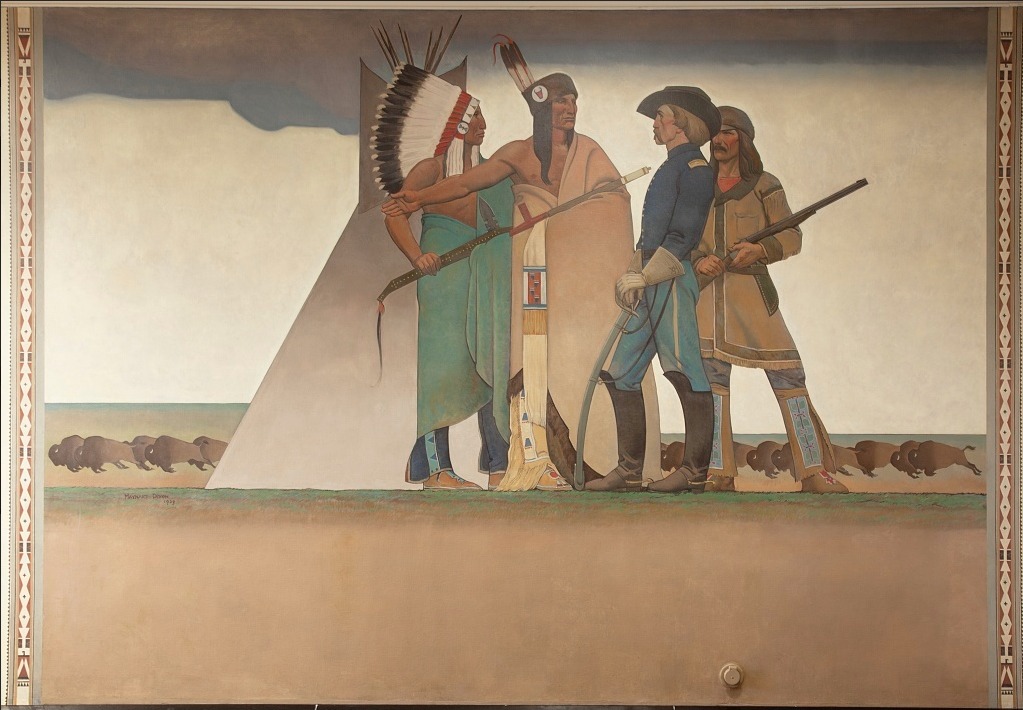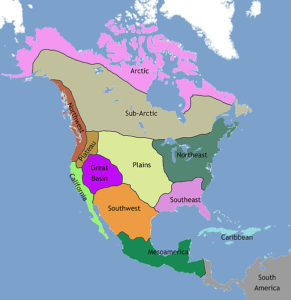Native American Ancestry: Tips and Resources, Part 1
 21
21Nov
Many people grew up hearing about a family member that was Native American. For some, having this heritage proved to be true, for others it was simply a myth. Proving the lineage can be difficult. Whether you are looking to connect to an actual tribe or just want to locate the ancestor with the Native American heritage, it means constructing a family tree using a multitude of sources. Here are some tips and resources to assist in your Native American research.
The first thing to always do, is start with what you know. Talk to family members, and make note of the names, dates, places, tribal affiliations, and other details they remember. If a tribal affiliation is not known, try looking in the place where the ancestor lived to determine what tribes existed that area. Keep in mind that the reservations and tribes moved often. After 1830, when the U.S. Congress passed the Indian Removal Act, tribes were forcibly moved to different locations.[1]
Some helpful maps are:
- Map of Indian and Oklahoma territories
- Map of Indian Land cessions in the United States
- Map of Indian Land Circa 1772

Once an area is identified, consider joining the historical society in that region. The Oklahoma Historical Society holds one of the largest collections of Native American records.
They send regular email updates to keep members up-to-date regarding the various record collections they hold.[2] This can be very valuable as new collections are digitized and released.
If a tribal affiliation is known, the Bureau of Indian Affairs may be able to assist with locating records and history of a particular tribe. Most of the files, regarding individuals, are kept at the agency level or in the Tribal Offices of each tribe. Many of the records created by the Bureau of Indian Affairs have been preserved by the National Archives. Some of the records have been digitized and are now available online in various places. Some online collections and their locations are:
Ancestry.com has more than 10 million Native American historical records and touch over 566 tribes. Access to these records collection is not free, they charge a fee for an account. The census counts, treaties, land allotments, marriage certificates, and citizenship documents are just a few of the records available. Some collections available on their site are:
- Indian Census Rolls 1885-1940 The Indian Census schedules are census rolls usually submitted each year by agents or superintendents in charge of Indian reservations, as required by an act of 4 July 1884. Information available in these records are:
- Name (Indian and /or English)
- Gender
- Age
- Birth date
- Marital status
- Tribe or reservation name
- Relationship to the head of the household.
- The Oklahoma and Indian Territory, Indian Censuses and Rolls, 1851-1959 This collection relates to the Arapaho, Cherokee, Eastern Cherokee, Cheyenne, Chickasaw, Choctaw, Creek, Delaware, Kickapoo, Miami, Muskogee, Osage, Potawatomi, Sac and Fox, Seminole, and Shawnee tribes.
- The U.S., Native American Citizens and Freedmen of Five Civilized Tribes, 1895-1914 This collection contains the federal government’s official tribal rolls (the “Dawes Rolls”) for the Cherokee, Chickasaw, Choctaw, Creek, and Seminole tribes.
- The U.S., Cherokee Baker Roll and Records, 1924-1929 The Baker Roll was the final roll compiled for determining membership in the Eastern Band, but it is only the beginning of the documents included in this collection. Along with the roll itself, you’ll find applications for tribal membership, correspondence regarding applications, transcripts of testimony, copies of decisions and findings by the Enrolling Commission, and much more.
- U.S., Indian Wills, 1910-1921, Native Americans submitted more than 2,500 pages of wills and probate records. These records span the period 1910 to 1921 and, with a few exceptions, pertain to Indian families living in the Plains and several western states. Researchers will find members of the following tribes represented in this collection: Chippewa, Sioux, Apache, Shawnee, Quapaw, Assinboin, Leach Lake Chippewa, Confederated Flathead, Ponca, Cheyenne, Crow, Sac & Fox, Nez Perce, Southern Ute, Omaha, Osage, and more.
If you are looking for free access to Native American genealogical records, some places to consider are:
The website includes essential links to the various tribes throughout the United States, such as school records, census records, treaties and other agreements, books, newspapers, and histories of the Native American tribes. Some collections held on this site are:
- Indian Tribes of the United States, here you will find a description of the tribe, it’s culture, religion, as well as references to other works.
- Indian Treaties, Acts and Agreements, this collection represents a large assemblage of federal and state treaties with the various Indian tribes for the United States and Canada.
- United States Bureau of Land Management Tract Books, 1800-c. 1955 is a collection of 3,907 tract books containing official records of the land transactions involving surveyed public lands. They are arranged by state and then by township and range. These books indicate who obtained the land and include a physical description of the tract and where the land is located. The type of transaction is also recorded, such as cash entry, credit entry, homesteads, patents (deeds) granted by the Federal Government, and other conveyances of title such as Indian allotments, internal improvement grants (to states), military bounty land warrants, private land claims, railroad grants, school grants, and swamp grants.
- History of the Indian Tribes of North America this page links to the histories of various tribes and including photographs and biographical sketches.
- Indian Schools, Seminaries, and Asylums this collection gives the name of the student or patient, their tribal affiliation, as well as the location of residence among other information.
Family Search is another free website that holds links to a whole host of records, including church and hospital records for Native Americans. A specific collection that should be noted is the Guion Miller Rolls. Guion Miller stated there were 45,847 enrollment applications filed, representing some 90,000 individuals.
- Eastern Cherokee or Guion Miller Rolls, - The documentation includes application forms, correspondence, and affidavits necessary to prove eligibility for a claim. Each applicant was asked:
- His or her full English and Cherokee name
- Place of birth
- Name of husband or wife (English and Cherokee)
- Names of children (English and Cherokee)
- Names (English and Cherokee), places of birth and date of death of parents and grandparents
- Names and ages of brothers and sisters (English and Cherokee)
- Names of uncles and aunts (English and Cherokee)
Carlisle Indian School Resource Center
The Carlisle Indian School collection holds information regarding the schools and farms that held Native American students. The first boarding school was established in 1879 by Captain Richard Pratt in Carlisle, Pennsylvania.[3] By the end of the century, dozens of Indian boarding schools were opened across the country. The beneficial information that can be obtained is:
- Indian and American names of students,
- parent names
- name of tribe
- Name of farm or location boarded.
While this is not a complete list of all Native American records available online, you can see there is an abundance of information accessible for those researching Native American ancestors. Though the research process can be difficult, don’t give up. Remember to start with what you know, take your time and explore the records that are available in the sites mentioned above. Part two of this series will address Native Americans in the Military, their naming traditions, and the controversial Native American DNA.
Billie and Mike
The professional genealogists at Price Genealogy are happy to assist you as you seek to learn more of your Native American ancestry.
[1] American Memory, “A Century of Lawmaking for a New Nation: U.S. Congressional Documents and Debates, 1774 – 1875”, Statute I, Chapter CXLVIII, Page 411, dated 28 May 1830, Library of Congress (https://memory.loc.gov/cgi-bin/ampage?collId=llsl&fileName=004/llsl004.db&recNum=458 : Accessed 2 November 2018)
[2] Oklahoma Historical Society, (http://www.okhistory.org)
[3] Mintz, Steven and Kellogg, Susan, “Domestic Revolutions”, Simon and Schuster, April 1989
